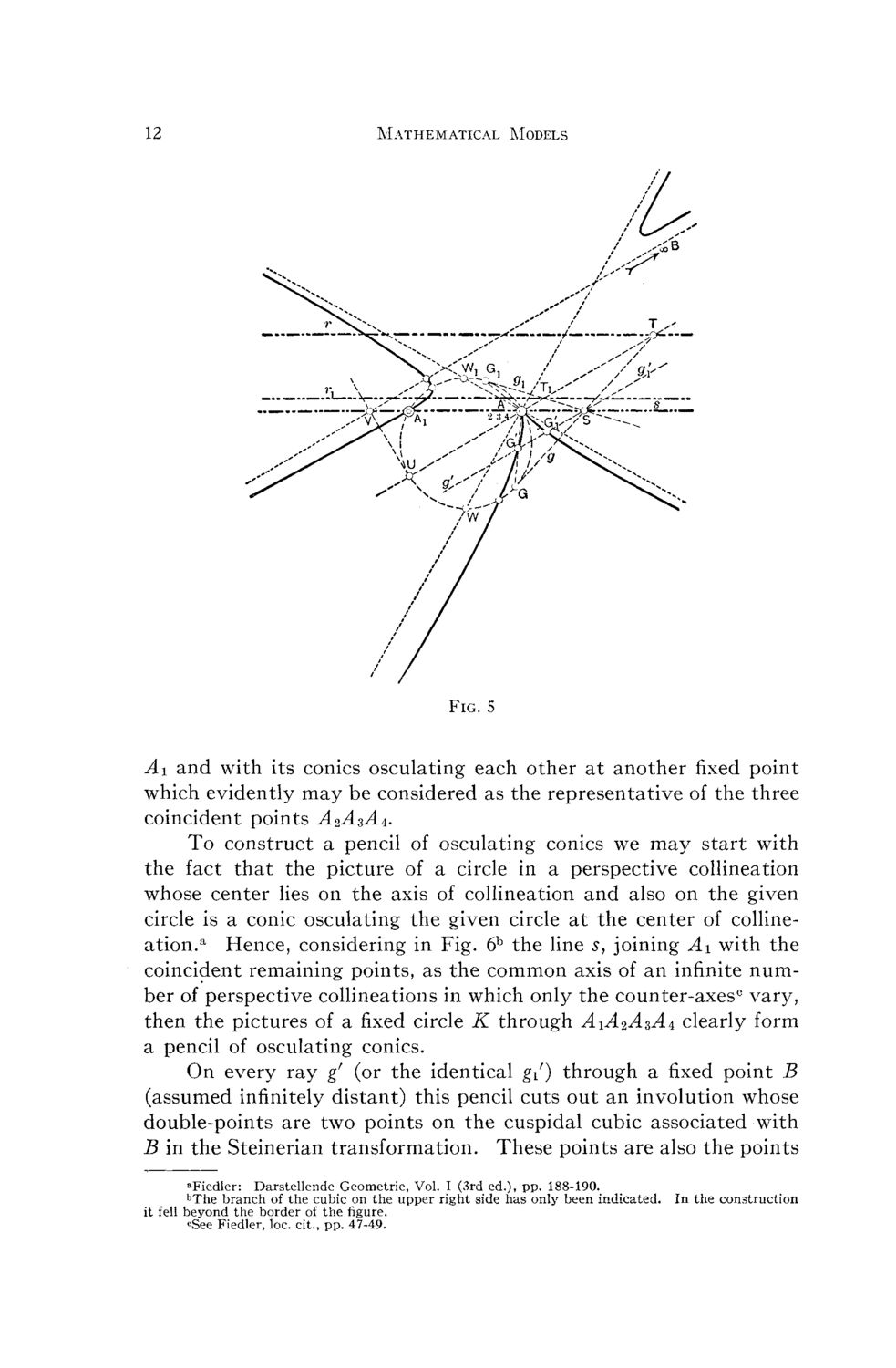| |
| |
Caption: Mathematical Models by Arnold Emch - Series 4 (1928)
This is a reduced-resolution page image for fast online browsing.

EXTRACTED TEXT FROM PAGE:
12 Mathematical Models Fig. 5 Ai and with its conies osculating each other at another fixed point which evidently m a y be considered as the representative of the three coincident points A 2 A s A ^ T o construct a pencil of osculating conies w e m a y start with the fact that the picture of a circle in a perspective collineation whose center lies on the axis of collineation and also on the given circle is a conic osculating the given circle at the center of collineation.a H e n c e , considering in Fig. 6b the line s, joining A \ with the coincident remaining points, as the c o m m o n axis of a n infinite n u m ber of perspective collineations in w h i c h only the counter-axes0 vary, then the pictures of a fixed circle K through A i A 2 A z A i clearly f o r m a pencil of osculating conies. O n every ray g' (or the identical g\) through a fixed point B (assumed infinitely distant) this pencil cuts o u t a n involution w h o s e double-points are t w o points o n the cuspidal cubic associated with B in the Steinerian transformation. T h e s e points are also the points ^Fiedler: Darstellende Geometrie, Vol. I (3rd ed.), pp. 188-190. bThe branch of the cubic on the upper right side has only been indicated. In the construction it fell beyond the border of the figure. cSee Fiedler, loc. cit., pp. 47-49.
| |